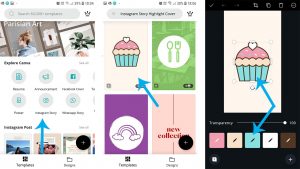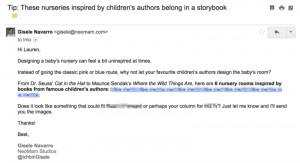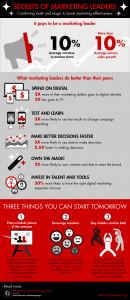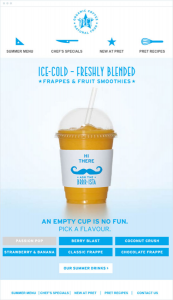
The year is off to a quick start, and the industry has already seen many noteworthy developments within the social media and social commerce channels. Given the social landscape is constantly evolving, it’s important for all brands to identify trends, strategize on which of those trends they can capitalize and ultimately prove out ROI and increase brand awareness.
To help retailers do this, here are a few trends I think will continue to gain steam and have impact on how Bigcommerce approaches telling our story on social platforms this year. Here’s to hoping this inspires you or your social media manager to strategize on how they can best tell your brand story on Facebook, Twitter, Pinterest and beyond.
Keep in mind, you should experiment with some of these social media trends, some you shouldn’t. Individual tactics should always depend on what makes sense for your goals, target audience and content. This is a best practice for all brands on social media; just because something is a trend doesn’t mean it is the right opportunity for your brand voice. However, trends can spark new ideas or thinking concerning how to use social channels to increase content distribution and social growth.
The Year of Native Video
Video continues to be the most rapidly-growing content type across channels, and visually driven channels like Instagram and YouTube are still growing in popularity. For example, Instagram is expected to reach 2 billion users in 2016 (currently at around 400 million).
According to Mark Zuckerberg, 50% of Facebook users watch at least one video natively on the platform every day. To maximize views, brands are increasingly producing high-quality content that encourage user engagement and even direct purchases. Consider Kate Spade’s shoppable #MissAdventure videos that each have garnered more than 2 million views. They are effective because the high-production value makes the videos memorable and they offer viewers the option to “shop the video” (buy products that appear in the video) at the end. Here’s what’s new:
- Facebook Live: This native feature for allows for instantly sharing live video using the Facebook platform, competing with YouTube, Periscope and Snapchat. Facebook’s powerful platform and active user base have led to widespread adoption of native videos, and Facebook Live will likely see similar adoption rates and dominate competitors, given that it doesn’t require learning a new ecosystem or any action other than hitting the share button. Facebook is also testing 360 Video, an Oculus-powered virtual reality feature that allows users to share immersive videos from a 360-degree view.
- Instagram additions: On top of Boomgerang GIFs, layout collages and Hyperlapse timelapses, Instagram has permanently added “Spotlight Complilations,” vertical slideshows curated by the Instagram team to showcase the best videos relevant to a theme, such as “Odd Couple Animal Videos.” This feature was tested for Halloween, Thanksgiving, and winter holidays, but is now producing at least one new video each day. This feature can be found in the Explore section and is meant to increase user engagement and new content discoverability. This is Instagram’s play against Snapchat’s Live Stories and Twitter’s Moments; however, in many respects it is more engagement-friendly as users can easily follow the creators of the featured videos.
- Snapchat: I would be remiss not to mention Snapchat, as its success has influenced much of the video-sharing craze since 2013. The platform has now reached 7 billion daily video views (amazing as Facebook’s video views are 8 billion, with a user base 10x that of Snapchat’s), and while it doesn’t provide a way to trace ads to sales, it does provide advertisers with invaluable data including number of views, number of times people used the branded filter, and how often people swiped to see the branded filter. Snapchat recently closed its lens filter business to focus on building out its ad technology and an API, so don’t be surprised when their revenue from advertising (and valuation) surges.
- YouTube supporting HDR: Announced at CES this year, YouTube will now support HDR (high dynamic range) content, high-quality video that is a step up from HD in terms of color and definition. Netflix and Amazon are the only other services that support this content. YouTube also supports 360-degree video experiences.
Twitter: Innovating to Grow
Jack Dorsey rejoined as Twitter’s CEO last fall in an effort to breathe new life into the company’s flagging user growth numbers and stock price. Their monthly active user base has stalled out at 320 million — an 11% YoY increase, but far from Facebook’s 1.55 billion. Since then, there have been several updates to Twitter’s family of apps to try to encourage use, including:
- Beyond 140: Dorsey has reportedly green-lighted a plan to expand tweet counts to up to 10,000 characters, the same as Direct Messages. With a targeted launch date at the end of Q1, expanded tweet counts aim to increase user engagement while keeping the experience the same. Twitter is testing a version of the product that would keep tweets to 140 characters with a click-to-expand option. Similar efforts (larger images, more content) have decreased engagement in the past, so time will only tell how this new effort pans out.
- Conversational Ads & Brand Enthusiast Gallery: Twitter is testing new ad products to grow its Promoted Tweets usage.
- Conversational ads work by including call to action buttons with customizable hashtags that encourage consumers to respond to and share content from an ad campaign.
- Twitter is also testing selling user content generated on Twitter for brands to feature in their campaigns. Legal waters are a little murky as original users are not paid if their content is featured, so for now Twitter is covering its bases with user approval via Direct Message.
- Conversational ads work by including call to action buttons with customizable hashtags that encourage consumers to respond to and share content from an ad campaign.
- In-stream Periscope viewing: It is now possible on iOS to view Periscope live content within your Twitter stream, without having to use the Periscope application. This is coming soon for desktop and Android users, as well. Previously, Periscope content was limited to those who had already downloaded the app. This is a game-changer because now anyone in Twitter can view live video content by simply tapping a tweet containing a Periscope link. “This is the first time where it looks like Twitter owns Periscope,” remarked a writer on Social Media Examiner.
- Moments: The day after Dorsey was reappointed in October 2015, Twitter debuted Moments, which attempted to highlight and build upon Twitter’s strength in engagement around live events in real time. Moments is a tab within Twitter that feeds dedicated news streams with content from a bevy of high-profile media brands. Although a brand can purchase Sponsored Moments, a price tag of $ 1 million makes it out of reach for most, and user engagement around this feature since October has been low.
I’m a big fan of Twitter so I’m truly looking forward to seeing the platform grow exponentially again in 2016. As a user, I am, however, worried new character counts or even a chronological timeline will make Twitter lose some of its personality. Twitter is a good company to watch if you’re looking to pivot your own brand strategy later this year.
Last but not Least: Social Commerce
I don’t need to convince this audience that buy buttons in social media channels are an important trend and opportunity to further drive brands’ omnichannel efforts — what many are now calling “contextual commerce” or “unified commerce.”
I’ll give you some statistics anyway. According to GlobalWebIndex, 37% of users follow their favorite brands on social media, 30% use social media to research products and 10% say a buy button on a social network would make them more likely to purchase a product.
How does that add up in reality? This holiday season, social sales accounted for just 1.8% of total online sales, and a 1.9% number from 2014 suggests the trend isn’t catching on. However, Twitter, Instagram and Facebook shopping functionalities are still in their infancies, and the consumer awareness for these capabilities just aren’t there yet. Pinterest has about 60 million Buyable Pins live — still small compared to Amazon’s hundreds of millions of products. Although adoption is low at this point, experts say social commerce could fix the “conversion gap” between mobile browsing and purchase.
Kirsten Knipp gives the window-shopping analogy in her Gartner blog, concluding social media “is a different discovery vehicle than Amazon. It’s about serendipity.” That is to say, while the ROI of social is not proven, it could very well attract new buyers and encourage more impulse purchases than the everyday purchases on Amazon.
What social media trends is your brand thinking of taking on this year? Let us know in the comments below.
Digital & Social Articles on Business 2 Community(55)








